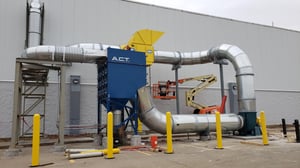 Choosing the right industrial dust collection system for your manufacturing environment is an important long-term decision.
Choosing the right industrial dust collection system for your manufacturing environment is an important long-term decision.
You need the right system to keep your facility clean, safe and running efficiently. With so many industrial dust collection systems available, it can be tempting to go with the lowest cost option. However, don’t let the initial dust collector cost fool you.
When determining which dust collector is right for your business, it’s important to consider more than just the price. A Total Cost of Ownership (TCO) comparison enables you to make a more accurate purchasing decision, and in the long run, saves you money.
To calculate the TCO of an industrial dust collection system, the energy required to run the equipment, the cost of consumables and the system’s maintenance and disposal should all be evaluated.
Energy
This is the amount of electrical energy consumed, in dollars, while operating the dust collection system. Although several components of a dust collector use electricity, the largest opportunity for electrical cost savings comes from the blowers and fans that move air through the system.
The blower or fan on a dust collector directly relates to how efficient that dust collector is. The size or cubic feet per minute (CFM) rating of the blower helps to determine the air-to-cloth ratio that the dust collection system is running. If the size of the blower is proportional to the amount of filter media area, the industrial dust collection filters will last longer and the blower will operate at a sustainable rate. Thus, the dust collector will be more efficient.
When operating a dust collector, the amount of air being moved through the system is directly proportional to the energy consumption of the system’s fan or blower. Because of this, the amount of differential air pressure plays a significant role in the TCO. With a new filter, there is low differential pressure because no material has built up yet, meaning there’s nothing impeding airflow. That may seem ideal, but in reality, more air than necessary may be flowing through the system, which is wasting energy (and therefore wasting money).
One way to avoid this problem is to use variable frequency drives (VFDs), which regulate the amount of air that flows through the fan to help control the current draw, making the dust collector more efficient. With VFDs installed, there are minimal charges for spikes in electric bills. VFDs can make a substantial difference in the utility costs to run a dust collection system.
Cost of Consumables
Another consideration when evaluating industrial dust collection systems is the cost of consumables. Expenses associated with this may include:
- Replacing filter cartridges
- Delivery cost for replacement parts
- Labor cost to switch out parts
- Cost of maintaining inventory (to eliminate downtime while waiting for replacement parts)
- Lost production while replacing parts
To minimize the cost of consumables, consider the life cycle and efficiency of components. The longer the lifespan of a part, the less frequently it will need to be replaced. Look for equipment with high-quality, efficient filters and components with a warranty to back up quality standards.
Maintenance and Disposal
Downtime to perform maintenance to switch out a part equates to labor cost, so consider equipment that is of high quality that won’t need excessive maintenance beyond the typical filter change-outs and cleaning operations.
Industrial dust collection filters are essential to the performance of a dust collector, but it can be difficult to know when to change them and what type of filters to use. The lifespan of different filters can vary based on the application in which dust is being collected, as well as the type of filter being used.
Many different methods can be used to determine when dust collector filters should be replaced. From simple observations to reading a gauge, it will become more apparent when the time is right to change filters. Simple cleaning and maintenance tasks not only improve the performance of your dust collector but can extend the life of it as well.
Determine the True Cost of Operating a Dust Collector
Now that you know how to determine the TCO for dust collection systems, you can feel comfortable making a purchase decision that will be the most cost-effective in the long run. Remember the running cost and installation cost pales compared to the value of safe and efficient work areas for your team to enjoy for years to come. For further information on dust collector price or to discuss your specific needs, contact A.C.T. Dust Collectors. Our industrial dust collection systems are proudly made in the United States.


























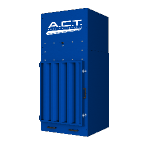
%20Collectors%20Image.png?width=143&height=143&name=ADC%20(Ambient)%20Collectors%20Image.png)
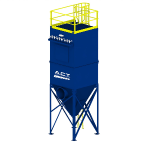

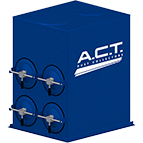
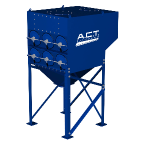
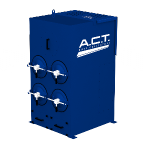


















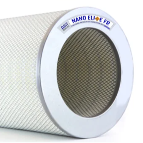


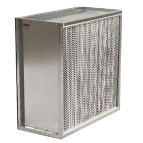

.png?width=240&height=91&name=ACT%20Dust%20Collectors%20Logo%20Solid%20White%202020%20(1).png)
.png?width=148&height=149&name=usa-manufactured-dust-collectors%20(1).png)